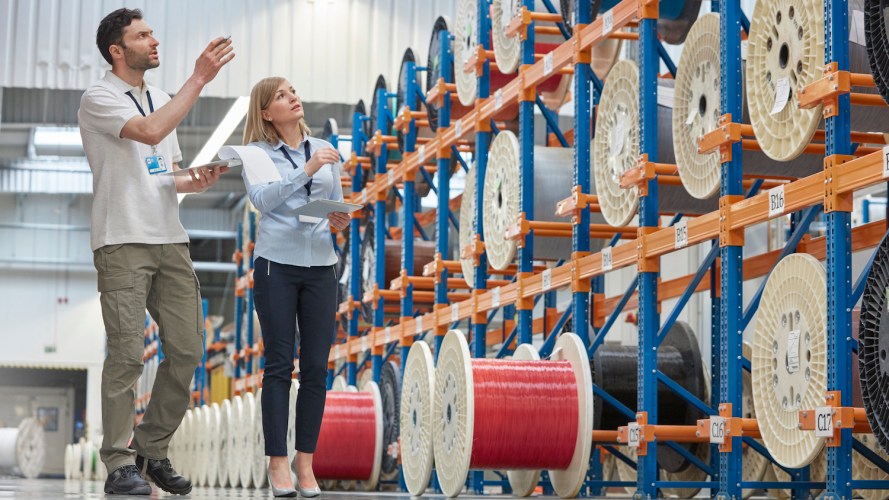Trying to Gain Fiber Internet Customers? 3 Ways AI Can Help



By incorporating AI into your processes, you can not only acquire new customers faster, but make the experience better for your current ones. It’s all about efficiency.
As more businesses and people seek faster internet connectivity than cables can provide, fiber is a popular investment. With the global fiber market expected to reach $31.3 billion by 2030, it’s clear that the fiber to the home boom is here.
AI can help you capitalize on this — scaling your efforts to gain new customers and helping you better serve current ones.
Acquiring as many customers as quickly as possible is the name of the game for fiber to the home providers. The huge investments in infrastructure are putting even more pressure on telcos to do just that.
Modernize service with automation
Harness AI and automation to free customer service teams from mundane tasks, deliver quality service, and become more efficient.



But, the number of new customers you can bring on diminishes every time a new project is delayed, whether it be broader infrastructure installations or individual homes. That hurts your bottom line and customer satisfaction.
So, how can you add more efficiency to the process while also not heaping on more significant investments? That’s where AI and automation come in. Generative AI can help communications providers optimize their investments, and that includes helping to capitalize on the fiber boom.
Generative AI implementations can allow you to ask specific questions based on your company’s CRM data, helping you make more informed decisions, leading to better business results.
Generative AI technology that is secure, trusted, and built on the breadth of your customer’s data can optimize your fiber investment every step along the way. From identifying neighborhoods for infrastructure projects all the way down to streamlining individual home installations, here’s how it can help.
1. Identify locations for fiber to the home investment
To capitalize on the fiber to the home boom, using generative AI starts at the very inception of the process – identifying what neighborhoods to lay fiber in.
Generative AI technology can analyze historical data, demographics, and market trends to identify where to invest in infrastructure deployments or upgrades, for example. Coupled with your own secured data points, such as your company’s win rate in various neighborhoods, generative AI will help you find the most cost-effective and efficient network design solutions.
It can also help fiber providers identify the communities with the highest interest level in fiber, as well as build intelligent workflows to increase sign-up and installation revenue faster.
2. Scale your high-performance fiber sales
Keep in mind, the AI you deploy is only as good as the data it draws on. You can use AI with your secured data to tailor your marketing efforts, such as designing visually appealing, personalized ads to target specific audiences based on browsing and purchase history, building predictive models to forecast customer buying behavior.
Generative AI coupled with longstanding machine-learning-based AI capabilities is the “holy grail,” for scaling your reach, according to Vala Afshar, Salesforce’s chief digital evangelist. That applies to deploying fiber to as many homes and businesses as possible, as well.
It can help optimize your sales and marketing through other benefits, such as:
- Lead scoring: Use AI to automatically analyze and prioritize fiber installation leads based on their likelihood to convert.
- Account and opportunity insights: AI and machine learning algorithms can gather and analyze data from internal and external sources to provide a holistic view of potential fiber accounts and sales opportunities.
- Predictive forecasting: With predictive analysis, AI can draw from historical data, patterns, and other correlations to give fiber providers the ability to anticipate customer behavior, predict sales trends and make other data-driven decisions.
Taking it a step further, generative AI predicts future sales trends, analyzes sales data, and creates personalized communication — helping you make the most of the fiber to the home trend.
Generative AI can then help your sales team close and optimize new fiber deals, as well.
It can create proposals and contracts from customer data, streamlining creation, improving personalization, efficiency, and accuracy throughout the process.
Order management analytics — on everything from order performance metrics, tracking, and inventory management — can help identify upsell opportunities and product recommendations, saving man hours on clerical tasks.
3. Make your installation process better for workers and customers
AI doesn’t stop once your techs are in the field, either.
It gives dispatchers full visibility to match workers and assignments, and consistently allocates projects based on skills, location, inventory, and business rules. It lets them see the mobile workforce and every job on a single screen.
AI-powered chatbots or virtual assistants can provide real-time updates on installations or service requests that reduces the time for human intervention.
It can deliver next-best actions and troubleshooting for field service technicians during installation. For example, computer vision algorithms can analyze images or video of installation sites to guide technicians through the process and ensure accuracy along the way and identify any issues that need to be addressed.
This creates a streamlined installation process and allows you to get into and out of more homes and businesses faster. AI helps you provide the excellent service that customers expect, giving you an advantage in the fiber to the home race.
Putting it all together with generative AI
Let’s look at an example of a fiber provider using generative AI to turn a simple service request of a business broadband customer into a potential significant fiber installment for multiple office sites. Say a customer contacts the service center about concerns over jittery video conferences between their six office locations.
In the past, after learning about the problem, a sales representative would go back and research the locations of their offices, how many employees, and the type of business. They’d then use that information to predict the bandwidth – or whether it’s even available in the locations – needed for a solution. The rep, along with the technical architects, would establish what the fix is, think about an upsell, and write a proposal and contract.
That could take weeks, or months, to complete.
Instead, AI can take the customer prompt – fixing jitter-free video conferencing between six locations – and instantly provide the answers to all the questions needed to solve the problem.
This technology can pull from your secured customer data, identifying relevant information such as where those six locations are and employee count per location. Reading the data you already have, generative AI can let you know if the improved technology is available for those locations.
It can also build in an instant upsell recommendation, which in this case for example, would be installing fiber to the locations for increased bandwidth and the best possible speed and quality for video conferencing.
Generative AI then delivers a proposal and contract using all of that private information within your domain. A sales representative and network engineer are in the loop throughout to provide human feedback to fine tune or adapt the response, giving the personal touch needed for this all to work well.
But much of the manual work, the clerical work, is done by AI. It reduces the process that would have taken weeks to months manually down to just a few days, while freeing up your company’s resources to focus on higher level tasks – such as focusing on expanding fiber to the home and office.
Whether it’s identifying locations to install fiber or alerting reps to an upsell opportunity, generative AI and automation can help supercharge your company’s dash to acquire fiber customers and optimize those hefty investments.
Gain the edge in the fiber boom
Discover the foundational strategies and technologies needed to light up your fiber subscriber experiences.
































